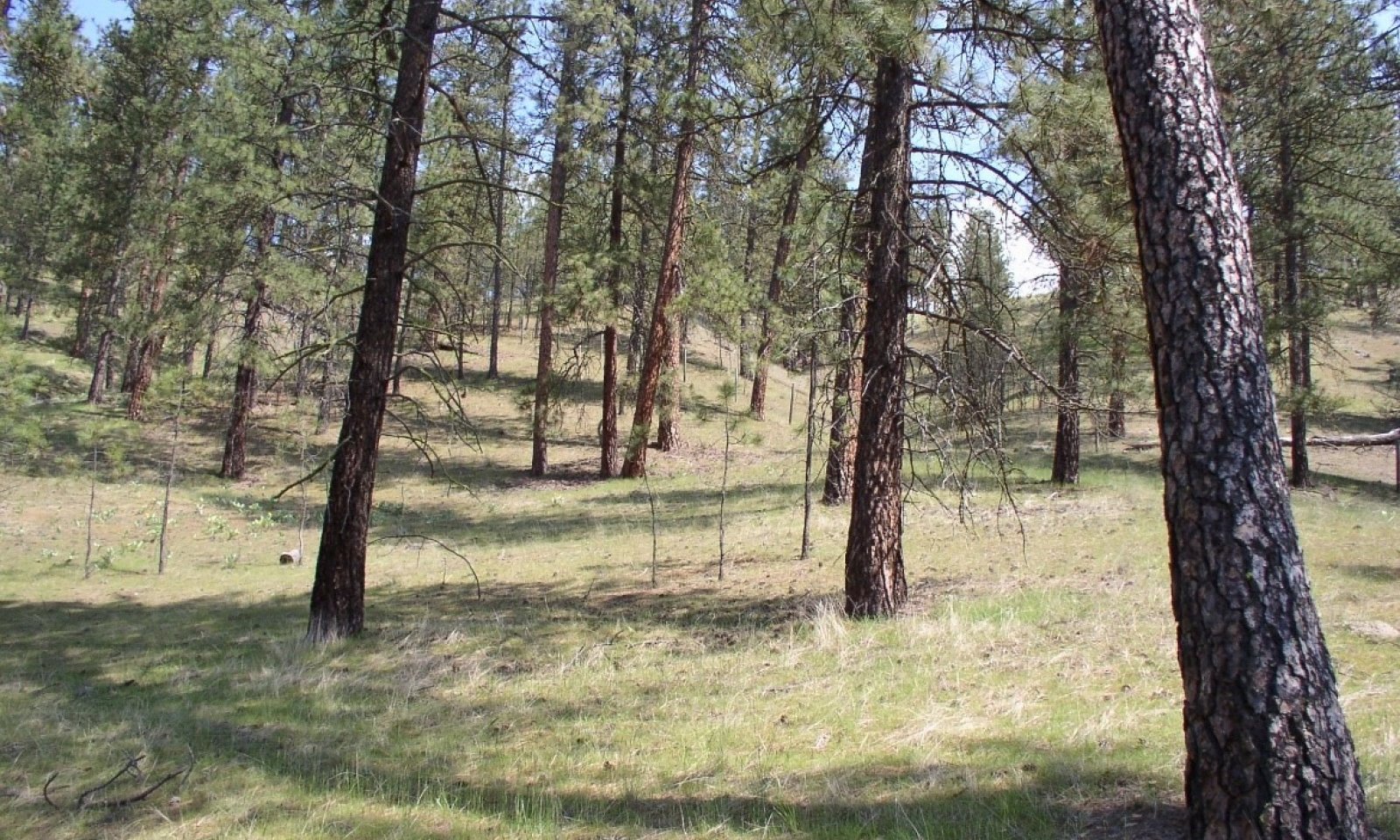
Mesic Xeric Hill Slopes and Terraces (Ponderosa Pine Hot Dry Grass)
Scenario model
Current ecosystem state
Select a state
Management practices/drivers
Select a transition or restoration pathway
- Transition T1A More details
- Transition T1B More details
- Restoration pathway R2A More details
- Restoration pathway R3A More details
-
No transition or restoration pathway between the selected states has been described
Target ecosystem state
Select a state
State 1
Reference




Description
This state is dependent on the occurrence of frequent low intensity ground fires keeping an open grown pine stand with a dominant ground cover of bunchgrass. When fire intervals are infrequent pine regeneration can survive and a patchy pine woodland develops underneath the large old pine. With drought stress the large old pine can be subject to beetle kill and the understory pine stands subject to dwarf mistletoe infestation. It is also possible to have a stand replacement fire when stand density is increased and ladder fuels can reach the larger pine crowns.
Major insects that cause mortality in ponderosa pine are the western pine beetle, mountain pine beetle, and pine engraver beetle. The western and mountain pine beetles can kill mature to old growth pine. The pine engraver beetles attack and kill young pole size stands. Drought and tree to tree competition cause stress which increases bark beetle mortality. Other insect concerns in pine include the following defoliators: Pandora moth, pine butterfly, sawflies, and needle miners.
Major diseases include Annosum and Armillaria root rot, commandra rust, and elytroderma needle disease, Dwarf mistletoe is a major concern infecting over 25% of ponderosa pine acreage. It is more serious in the drier ponderosa pine sites. It also can spread more readily in dense stands lacking frequent fire cycles. Douglas-fir mistletoe can also be a concern when Douglas-fir occurs.
Forest productivity is measured using site index (SI) and culmination of annual increment (CMAI). Ponderosa pine is the key tree species and site indexes ranges greatly depending on local site characteristics. NRCS forest site index plots taken throughout MLRA B6 shows this variability. Site index ranges from 60 – 84 using Meyers 100-year total age table. CMAI range is 14 – 46. Low CMAI values depict low tree stocking (density) due to droughty sites.
Forage production estimates from NRCS Range 5 Plots in Okanogan County in Ponderosa pine /bluebunch wheatgrass and PP/Idaho fescue sites are as follows based on overstory tree canopy. Forage production figures are in pounds/acre for all vegetation below 4.5 feet (grass, sedges, forbs, shrubs, tree regeneration): In addition, these Ppine/grass sites are adjacent to 12 – 15 inch loamy-sandy loam range sites composed of bluebunch wheatgrass and fescue in association with sagebrush and/or bitterbrush. Comparisons are made below in forage production.
Overstory tree canopy – Forage production
0 – 20% - 600 to 1100 lbs/ac
60+% < 400 lbs/ac
No tree canopy – 12 -15 inch range site
800 to 1200 lbs/ac
The bulk of the grass production was bluebunch wheatgrass and Idaho fescue. Other grass species included needle and thread grass, prairie junegrass, rough fescue, pine grass and sandberg bluegrass. The most prominent forbs were lupine, basalmroot, pussytoes, hawkweed, and yarrow. The most prominent shrub was bitterbrush. Other shrubs included currant, snowbrush ceanothus, big sagebrush, rabbitbrush, and buckwheat. Tree regeneration included mostly ponderosa pine with an occasional Douglas-fir.
Submodel
Mechanism
Invasion of introduced perennial and annual grasses outcompete native bunchgrasses.
Mechanism
Site preparation, native grass reseeding, weed control, grazing protection followed by prescribed burning after establishment to maintain site in reference plant community.
Mechanism
Afforestation. Site preparation, tree planting, maintenance. Possible planting of native shrubs and grasses. Highly unlikely in urban developed lands unless for parks or conservation lands. Agricultural lands more likely converted if land is retired from crop/pasture or sold to owners desiring trees.
Model keys
Briefcase
Add ecological sites and Major Land Resource Areas to your briefcase by clicking on the briefcase (![]() ) icon wherever it occurs. Drag and drop items to reorder. Cookies are used to store briefcase items between browsing sessions. Because of this, the number of items that can be added to your briefcase is limited, and briefcase items added on one device and browser cannot be accessed from another device or browser. Users who do not wish to place cookies on their devices should not use the briefcase tool. Briefcase cookies serve no other purpose than described here and are deleted whenever browsing history is cleared.
) icon wherever it occurs. Drag and drop items to reorder. Cookies are used to store briefcase items between browsing sessions. Because of this, the number of items that can be added to your briefcase is limited, and briefcase items added on one device and browser cannot be accessed from another device or browser. Users who do not wish to place cookies on their devices should not use the briefcase tool. Briefcase cookies serve no other purpose than described here and are deleted whenever browsing history is cleared.
Ecological sites
Major Land Resource Areas
The Ecosystem Dynamics Interpretive Tool is an information system framework developed by the USDA-ARS Jornada Experimental Range, USDA Natural Resources Conservation Service, and New Mexico State University.
